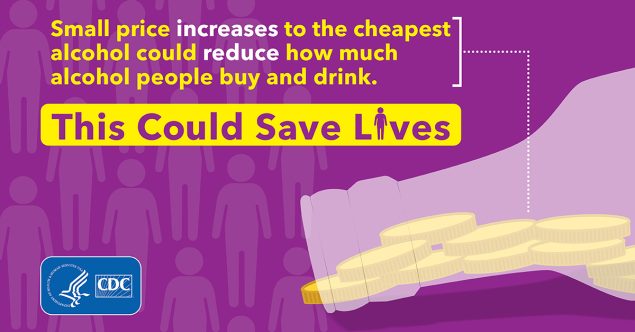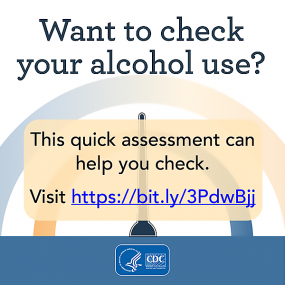Minimum Pricing Policies
When alcohol is sold at a low price, people tend to buy and drink more of it. Excessive alcohol use can lead to alcohol-related illness, injury, and death. This can be prevented. Small increases to the prices of the cheapest alcohol in the United States could save lives.
Policies that Impact Alcohol Prices
One of the most effective ways that we can reduce alcohol-related illness, injury, and deaths is with policies that increase alcohol prices. When alcohol is sold at a lower price, people tend to buy and drink more of it. We can reduce alcohol-related harm by raising alcohol prices.
The most common policy in the United States to adjust alcohol prices is taxation. One type of tax, excise tax, is based on the volume of alcohol sold. However, alcohol excise taxes have not been changed to keep up with inflation. This means that the relative prices of alcoholic beverages have become cheaper during the past 30 years. This can lead to increases in alcohol use and related harm.
Alcohol minimum pricing policies are another way to adjust alcohol prices. These policies can be used with alcohol taxes. Minimum pricing policies set prices that alcohol cannot be sold beneath. This leads to small increases in the prices of the cheapest alcohol, which can reduce alcohol-related harm.
How Alcohol Minimum Pricing Policies Work
There are two main types of alcohol minimum pricing policies. A minimum unit pricing policy sets prices per standard drink of pure alcohol. The other minimum pricing policy sets prices based on a container size of a specific beverage type, such as a liter of beer or a liter of liquor.
Small increases to alcohol prices can save lives
Minimum unit pricing policies work by increasing the prices of the cheapest alcohol based on the number of standard alcoholic drinks in a bottle or other container of alcohol. This increases the price of the alcohol product where it is sold.
When the price increases, people generally buy and consume less alcohol. When less alcohol is used, people have a lower chance of developing an alcohol-related illness, harming themselves or others, and dying from a cause related to drinking. Increases to the prices of the cheapest alcohol can lower alcohol-related hospital visits and deaths.
Research shows that small price increases — by just 13 cents per standard drink — to the cheapest 8% of liquors sold in a state could reduce alcohol consumption per capita in the state by nearly 4%. This would prevent about 350 deaths in a year, or 8% of the deaths from alcohol use in the state. 1

Minimum Pricing Policies in the United States
Using alcohol minimum pricing policies could be a feasible and effective strategy in the United States to reduce alcohol-related illness, injury, and death. These policies are used in other countries, including several European countries and Canada. However, they are not common in the United States. Beginning in 2021, Oregon set minimum prices on distilled spirits, which are sometimes referred to as liquor.
Establishing minimum pricing policies to make small price increases to the cheapest alcohol products could reduce how much alcohol people drink and save lives.
Learn more about other effective alcohol policies that can improve our health and wellbeing.
References
- Bertin L, Leung G, Bohm MK, et al. Estimating the effects of hypothetical alcohol minimum unit pricing policies on alcohol use and deaths: A state example. Journal of Studies on Alcohol and Drugs. 2024;85(1):120–132. https://www.jsad.com/doi/abs/10.15288/jsad.22-00274
